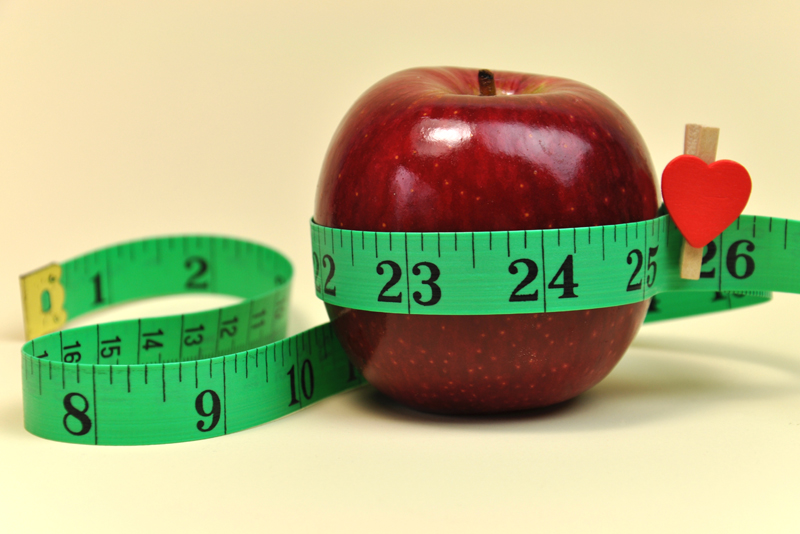How the Body Burns Fat

If you have excess fat on your body, you probably have an aim to reduce that volume. Here is how your body burns fat and how you can help that process along.
Your body can process four types of nutrients to make energy - fat, protein, carbohydrates, and alcohol. When your body ends up with excess nutrient in its system, it wants to hold onto it for future times of trouble. It does this with fat. It tucks fat into your fat cells for a "rainy day". In our sugar-rich modern world, this means many people end up overweight or obese.
The body will only tap into those stores if it needs to. That is, the person has to eat less calories in a day than the body needs before the body decides it should burn some fat to make up the rest.
If the blood sugar levels drop to a point that the body realizes it needs more energy, this kicks the fat cells into life. The triglycerides within the fat cells get chopped up and released out into the body. The components which are now in the blood stream are one glycerol and three fatty acids.
 It used to be thought that the brain couldn't use fatty acids, but we now know that the brain can indeed rely on fatty acids, glucose, and ketone bodies to keep it happy and healthy.
It used to be thought that the brain couldn't use fatty acids, but we now know that the brain can indeed rely on fatty acids, glucose, and ketone bodies to keep it happy and healthy.
The heart loves fatty acids. I found a source which says the heart aims for getting 90% of its energy from this source. The muscles that support your skeletal system use fatty acids, especially when you're exercising. The kidney and liver also rely on these sources.
So, when the fat metabolism process kicks off, much of your body then is bathed in delicious fatty acids which it directly uses. It's good to keep in mind the skeletal muscles and their taste for fatty acids. If you engage in regular low to medium level activity, that's exactly what gobbles up fatty acids. This encourages your fat cells to release more, and you lose weight.
In cells, the fatty acids are turned into energy (ATP) by the mitochondria. These are the little powerhouses of the cells. And, yes, that is where George Lucas got his idea for midichlorians for the Star Wars series. Interestingly, your mitochondria only have your mother's DNA in them! They solely descend from the mom. This is part of how genealogists can do maternal-line genetic testing.
In any case, your body naturally burns those fatty acids, and this is a normal, healthy part of a body's metabolism. In cases where the brain decides it doesn't have enough glucose available, it switches over to using fatty acids and ketone bodies instead. The liver is in charge of creating the ketone bodies out of fatty acids. This process is known as ketosis. And, again, this is a normal, natural process that is part of your body's toolkit for survival.
I aimed to keep this description fairly simple - let me know if you'd like me to clarify something!

Lisa Shea's Library of Low Carb Books
Your body can process four types of nutrients to make energy - fat, protein, carbohydrates, and alcohol. When your body ends up with excess nutrient in its system, it wants to hold onto it for future times of trouble. It does this with fat. It tucks fat into your fat cells for a "rainy day". In our sugar-rich modern world, this means many people end up overweight or obese.
The body will only tap into those stores if it needs to. That is, the person has to eat less calories in a day than the body needs before the body decides it should burn some fat to make up the rest.
If the blood sugar levels drop to a point that the body realizes it needs more energy, this kicks the fat cells into life. The triglycerides within the fat cells get chopped up and released out into the body. The components which are now in the blood stream are one glycerol and three fatty acids.
 It used to be thought that the brain couldn't use fatty acids, but we now know that the brain can indeed rely on fatty acids, glucose, and ketone bodies to keep it happy and healthy.
It used to be thought that the brain couldn't use fatty acids, but we now know that the brain can indeed rely on fatty acids, glucose, and ketone bodies to keep it happy and healthy. The heart loves fatty acids. I found a source which says the heart aims for getting 90% of its energy from this source. The muscles that support your skeletal system use fatty acids, especially when you're exercising. The kidney and liver also rely on these sources.
So, when the fat metabolism process kicks off, much of your body then is bathed in delicious fatty acids which it directly uses. It's good to keep in mind the skeletal muscles and their taste for fatty acids. If you engage in regular low to medium level activity, that's exactly what gobbles up fatty acids. This encourages your fat cells to release more, and you lose weight.
In cells, the fatty acids are turned into energy (ATP) by the mitochondria. These are the little powerhouses of the cells. And, yes, that is where George Lucas got his idea for midichlorians for the Star Wars series. Interestingly, your mitochondria only have your mother's DNA in them! They solely descend from the mom. This is part of how genealogists can do maternal-line genetic testing.
In any case, your body naturally burns those fatty acids, and this is a normal, healthy part of a body's metabolism. In cases where the brain decides it doesn't have enough glucose available, it switches over to using fatty acids and ketone bodies instead. The liver is in charge of creating the ketone bodies out of fatty acids. This process is known as ketosis. And, again, this is a normal, natural process that is part of your body's toolkit for survival.
I aimed to keep this description fairly simple - let me know if you'd like me to clarify something!

Lisa Shea's Library of Low Carb Books
You Should Also Read:
Fat Storage and Triglycerides
Ketones, Ketone Bodies, and Ketosis
Fats - Health Basics

Related Articles
Editor's Picks Articles
Top Ten Articles
Previous Features
Site Map
Follow @LisaLowCarb
Tweet
Content copyright © 2023 by Lisa Shea. All rights reserved.
This content was written by Lisa Shea. If you wish to use this content in any manner, you need written permission. Contact Lisa Shea for details.










